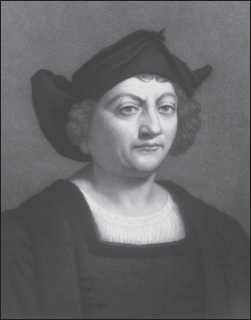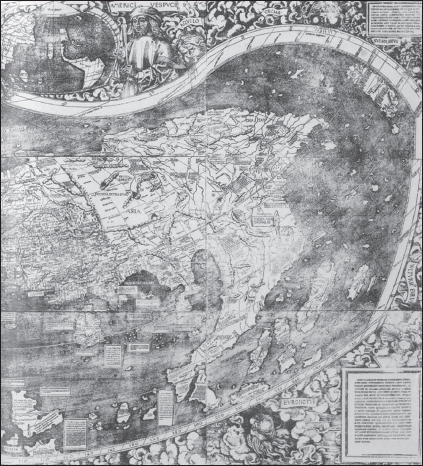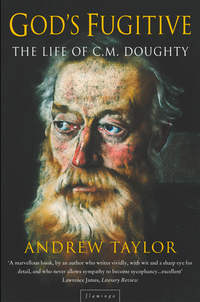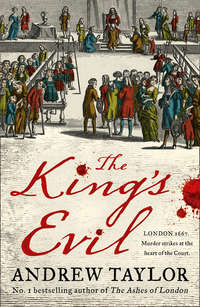
Полная версия
The World of Gerard Mercator: The Mapmaker Who Revolutionised Geography
BEHAIM’S TIMING, though, was unfortunate from an even more important point of view. As he was completing his model of the world, the world itself was changing beyond recognition. In Spain, the armies of Ferdinand and Isabella finally drove the Moors out of Grenada, breaking their last fingerhold in Europe and ending an Islamic presence that had lasted nearly eight centuries and enriched the country with art, literature, science, and trade. The king and queen had united the great kingdoms of Aragon and Castile with their marriage in 1469, starting an era of increasing royal prestige and power, and the departure twenty-three years later of Muhammad XI, or Boabdil, the last Moorish ruler on Spanish soil, reflected a new confidence for Christendom and the end of any lingering Arab dreams of further European conquest.
Some years later, a by then noted traveler of the day looked back to record the scene in Grenada as Boabdil left. “On the second day of the month of January, I saw the royal banner of Your Highnesses raised by force of arms on the towers of the Alhambra, which is the fortress of the said city, and saw the Moorish king come to the gates of the said city and kiss the royal hands of Your Highnesses.”5 He could tell that he was witnessing one of history’s defining moments. This same traveler had several names during a seafaring life which took him from country to country in the west of Europe, seeking support and financial sponsorship to fulfill the dream that was to turn into the second great event of this annus mirabilis. To his Genoese parents, he was Cristoforo Colombo; to the Spanish who eventually supplied him with money and ships, he was Cristóbal Colón; and to English-speaking historians, he later became Christopher Columbus.
By comparison with the defeat of the Moors, his exploits in the Ocean Sea, the Atlantic, attracted little immediate attention; but they rendered Martin Behaim’s globe out of date almost before its paint was dry. Behaim’s masterpiece had not even been unveiled to the Nuremberg merchants in 1492, when on August 3 three small ships set sail from Palos de la Frontera in southern Spain on a secret mission to an unknown destination. Seventy days later, Columbus and the captains of his little fleet stood on the shore of an island he named San Salvador in honor of the Holy Savior he believed had blessed his voyage.
In theory, maintaining a course due west by keeping the Sun at a constant height in the sky was simple enough, but the voyage had tested contemporary seamanship and navigation to the limit. Columbus had found it impossible to record how far he was going, let alone log his course. In fact, the devious captain kept two logs, one to reassure the crew, by understating the distances the ship had traveled, and a second, secret one for his own use, which recorded how far he believed they had really gone.* Yet even his supposedly accurate private calculations of the expedition’s position were often wrong. His observations of flotsam, the behavior of birds and fishes, and the seaweed in the Sargasso Sea all seemed to indicate that the ship was coming close to land, but the helmsman failed to find bottom first with one plumb line, then with two tied together. The flotilla was still in deep water, far out at sea.
Navigation devices were notoriously untrustworthy, and the traditional astrolabe with which Columbus tried to take sightings of the Sun above the horizon was almost impossible to use accurately on the pitching and tossing deck of a ship. As the flotilla headed west into the unknown, even the compass seldom showed true north, and its increasing inaccuracy added considerably to the panic among his crew. “The pilots took the north, marking it, and they found that the needles declined north-west a full point, and the sailors were alarmed and depressed,” Columbus noted in his journal on September 17.6 Mariners had been aware for some time of the phenomenon of magnetic deviation – the way variations in the Earth’s magnetic field cause the compass needle to diverge from true north depending on the position of a vessel on the Earth’s surface – but they had no idea why or how it happened. The effect was much more pronounced as they headed west; even their instruments were betraying them. None of the old rules learned in years of sailing near to the coasts of Europe and Africa seemed to apply.

Christopher Columbus
Science Photo Library, London
The areas in which Columbus had complete and unquestioning faith proved to be even more deceptive. He was sailing with all the preconceptions of a medieval Christian – the same preoccupations as the creators of the outdated mappaemundi. Many of the maps he had consulted as he planned his journey not only showed the lands that the cartographer believed existed, but also related them to the faith of the Catholic Church; the Bible was as much a source of geography as Ptolemy or the accounts of ancient travelers. Their reports were woven together with biblical tradition, so that, for example, the Rivers Ganges, Nile, Tigris, and Euphrates were identified as the four rivers said by Genesis to flow from Paradise. None of the maps Columbus consulted gave any hint of a vast new continent over the horizon.
Columbus, a devout Catholic who believed that he was on a special mission from God, never saw any reason to doubt the authority of the Bible. The medieval mapmakers, on the impeccable authority of St. Augustine, had placed the earthly Paradise in the farthest east of Asia, and when in 1498, on the third of the four voyages he made across the Atlantic, he found freshwater, not salt, out at sea off the northeast coast of South America where the Orinoco River pours into the ocean, his mind was made up. He declared that he was approaching the four heavenly rivers. “I say that if this river does not originate in the Terrestrial Paradise, it comes and flows from a land of infinite size to the south, of which we have no knowledge as yet. But I am completely persuaded in my own mind that the Terrestrial Paradise is the place I have described,” he wrote to Ferdinand and Isabella.7
Such a huge outpouring of freshwater could only come from a vast area of land, and he was convinced by this time that he had reached a stretch of the mainland that had never before been discovered by Europeans. His argument was faultless, but his conclusion was wrong. The Bible had said nothing about a great and unknown continent to the west, and Columbus found it easier to believe that he was approaching the gates of Paradise than that he was standing at the threshold of a new world.
He had the same misconceptions about the world as Martin Behaim, although there is no evidence that they ever met or corresponded. “This is the island of Cipangu of which so many marvellous tales are told,” Columbus declared confidently in his journal, as he sailed northwest from San Salvador to Cuba. “On the globes which I have seen, and on the drawings of mappamondes, it is in this region.”8 It is still there on Behaim’s globe. Halfway across the great Ocean Sea is shown St. Brendan’s Island,* the “Promised Land of the Saints” that fascinated generations of mapmakers, and about the same distance farther on, the island of Cipangu, or Japan, with its temples and palaces of gold. Between them the globe shows nothing but sea.
In planning his original voyage, Columbus relied heavily on the mistaken observations of Marco Polo, who had reached the court of Kublai khan by traveling overland through Asia more than two hundred years before, but had exaggerated the distance he had covered. Columbus’s logic was faultless – the longer the journey by land to the east, the shorter the route by sea to the west – and it led him to underestimate the circumference of the world by about 25 percent.
Once he left the well-charted waters east of the Canary Islands, he had guidance, and probably a roughly drawn map, from a Florentine physician, astronomer, and geographer named Paolo Toscanelli dal Pozzo. Toscanelli, like Columbus, had studied the travels of Marco Polo, and had a thorough knowledge of the writings of Ptolemy. He had talked to European travelers to India and the Far East, and also to at least one ambassador from India who had visited Pope Eugenius in Rome. All his researches led him to the conclusion that the landmass of Europe and Asia spread across nearly two-thirds of the globe, so that the western route across the ocean to Asia could cover no more than 130 degrees of longitude. If Ptolemy’s estimate of 500 miles for each degree was correct, the journey to the land of the great khan should have been no more than 6,500 miles.†

THE KNOWN WORLD was expanding in other directions as well in the years shortly before Mercator’s birth. Four years before Columbus’s first voyage, the Portuguese navigator Bartholomeu Dias had rounded the southern tip of the African continent, overturning the accepted Ptolemaic wisdom that the African mainland was connected to a great southern landmass. As the fifteenth century drew to a close, the new Portuguese king Emmanuel – Manuel o Venturoso, the Fortunate – called on Dias to help with the construction of a flotilla of three ships to open a new trade route to India. Leadership of the new expedition was to have been offered to a military commander and government official named Estevão da Gama, but he died before the preparations were complete. Emmanuel turned to Estevão’s twenty-eight-year-old son, who had already distinguished himself in naval engagements with the French in the defense of Portuguese settlements on the coast of Guinea. Vasco da Gama was entrusted with the voyage, which the king hoped would establish Portuguese trading supremacy for generations.
If the magnitude of Columbus’s discovery was initially unappreciated, news of da Gama’s return to Lisbon in September 1499 from Calicut on the west coast of India, more than two years after he had embarked, shook the commercial houses of Europe to their foundations. The Italian merchants who had made fortunes out of their control of the overland trade routes into the eastern Mediterranean faced imminent disaster. “In this I clearly see the ruin of the City of Venice,” declared the wealthy Venetian banker Girolamo Priuli in his diary,9 and he was not mistaken: The prosperity of Venice, which had controlled the European end of the great caravan routes across Asia and Arabia, was one of the casualties of a series of discoveries that continued over the following decades.
The expeditions were driven partly by religion – by the desire to find more Christian communities to counterbalance the growing threat of militant Islam, whose soldiers still lined the southern and eastern borders of Christendom even after the expulsion of the Moors from Andalusia. But the prospect of trade, the quest for wealth, lay behind everything. King Emmanuel himself, writing to Ferdinand and Isabella after Vasco da Gama’s return, declared that the motive of the voyage had been “the service of the Lord our God, and our own advantage” – about nutmeg and the spice trade rather than knowledge.
For someone drawn to cartography, Mercator could hardly have been born at a more propitious moment in the history of geography and exploration. In the east, Dias and Vasco da Gama had shattered the old assumptions by sailing into a sea that should have been surrounded by land, while to the west, a new continent of undreamed-of size and wealth had been discovered, even if it was not yet appreciated.
For centuries, Europe had seemed, to Europeans at least, an oasis of certainty in a vast and unfriendly desert of ignorance. Following these voyages, the continent engaged in an unprecedentedly outward-looking period of exploration; where men had once dreamed of dragons and sea monsters, they found elephants and giraffes. A scramble for land, wealth, and influence that was to double the size of the known world within a few decades had begun.
Practically every voyage added more knowledge of new lands. Progress was faster to the east and in the Indian Ocean, where there was already a network of established trade routes and a ready supply of local guides and pilots, but along the coasts of America, too, the map began to take shape. In 1500, for instance, the Portuguese explorer Pedro Alvares Cabral set out to follow da Gama’s route to India but, in pushing even farther west in search of good winds, became the first mariner to sight the coast of Brazil.10
Europe was buzzing with gossip and speculation about the new discoveries, but the maps drawn during the early sixteenth century show how gradually geographic knowledge accumulated. The German clergyman-cartographer Martin Waldseemüller produced a world map in 1507 in which the coastlines of Europe, Africa, and the Middle East are all instantly recognizable today – but to the east and west, those confident outlines faded into guesswork and supposition. Waldseemüller drew the Far East with little more accuracy than Ptolemy had managed fifteen hundred years earlier, and America clings to the map’s left-hand edge, a long narrow strip of land that is evidently sketched in with only the skimpiest knowledge. For all the lack of detail and the unfamiliar outline, though, America is there – a separate continent, divided from Asia by the waters of the Pacific Ocean. Waldseemüller’s map was the first to suggest that what had been shown before as a collection of islands off the coast of Asia was actually a single landmass.
Parts of the eastern coast of North America had been surveyed and mapped by the turn of the century, particularly by the Florentine explorer Amerigo Vespucci, and the title Waldseemüller chose for his map indicates the two sources on which he relied. It was drawn, he said, “secundum Ptolomei traditionem et Americi Vespucii aliorumque lustrationes” (according to the account of Ptolemy and the voyages of Amerigo Vespucci and others). By then, Vespucci had led several expeditions down the east coast of the vast new land, seeking financial backing wherever he could find it, and sailing sometimes under the Spanish flag, sometimes under that of Portugal. He had none of Columbus’s obsessions with Cathay or the terrestrial Paradise, and declared that the lands far to the west were a discovery which “it is proper to call a New World.”11
No European had yet seen the west coast of the Americas, and in this section of the map, Waldseemüller’s guesswork was amazingly accurate. Not until 1513, six years after it was published, did the Spanish explorer Vasco Núñez de Balboa become the first European to set eyes on the Pacific Ocean from the famous “peak in Darien,”12 and another nine years passed before Ferdinand Magellan’s expedition arrived back in Spain after sailing across that ocean. The presence of the then-unknown Pacific on Waldseemüller’s map is one of the great mysteries of cartographic history. Perhaps he had access to more information, now lost, from Vespucci’s expeditions, or, more likely, perhaps he simply drew his conclusion from Vespucci’s belief that America was a completely new world. Whatever his motive, Waldseemüller named the continent America on his map in Vespucci’s honor. “I do not see why anyone should object to calling it after Americus the discoverer,” he declared in the book that accompanied his map.13 Waldseemüller sold more than a thousand copies of his map and his book – enough to establish the name America in people’s minds, though when he realized his mistake a few years later, he tried to give Columbus the credit he deserved.*


Martin Waldseemüller’s World Map, 1507
Library of Congress, Washington, D.C.
Fifteen years after Waldseemüller’s map, the first known circumnavigation of the globe was completed14 – the crucial final proof, if any were needed, that the world was round. Ferdinand Magellan left Seville in late September 1519 with the commission of King Charles I – later to be the emperor Charles V – and a ragtag and bobtail fleet of five aging ships, crewed by the sweepings of the Spanish docks. As a young man, according to some reports, he had been a pupil of Martin Behaim; if so, the return of his expedition after a full three years at sea proved both the strengths and the shortcomings of his teacher’s ideas. Behaim had been right about the shape of the world – but disastrously wrong about the lands that lay on its surface. Magellan had sailed around a continent that Behaim never dreamed existed. He died shortly afterward in a skirmish with natives on a Pacific island, but the return in 1522 of the Victoria, sole survivor of his flotilla, was the inspiration for a succession of Spanish probes up the western coast of South America.
WHEN MERCATOR was born in 1512, the known world was, thus, still surrounded by shadows. By the time he died eighty-two years later, merchants and bankers were making vast fortunes by bringing regular cargoes back from the East Indies by sea,* while the apparently limitless gold and silver† plundered from the ancient civilizations of the New World to the west had turned the economies of Spain and Europe upside down. During his lifetime, the traders, financiers, and businessmen of Europe took control of the new lands that had been revealed, and they did so because mariners gradually took control of the seas.
In the Middle Ages, there had been no sense that knowledge could be outdated, that the wisdom of the ancients could be challenged by experiment, observation, or reason. Religion, too, had been buttressed by that same sense of stability. Suddenly, such challenges seemed to be happening all the time. Reflecting the frenetic pace of discovery, George Beste, who sailed the northern seas later in the sixteenth century with the English explorer and sometime pirate Martin Frobisher, would write with a mixture of awe and excitement: “Within the memory of man, within these fourscore years, there hath been more new countries and regions discovered than in five thousand years before; yea, more than half the world hath been discovered by men that are yet (or may very well for their age be) alive.”15 Within eight decades, in other words, the size of the known world had doubled.
FOR MORE THAN two hundred years, European mariners had prepared sketch maps to show the coastlines and the approaches to ports in Europe. But the maps that were available were virtually useless for long-distance navigation. The so-called portolan16 charts were often produced as an accompaniment to written descriptions of the coastal features, compiled by sailors for themselves or their close associates and based largely on their experience of the coasts that they illustrated. They were drawn by detailed observation and with careful reference to the mariner’s compass, but they had generally no lines of latitude and longitude, no learned references or legends. They took no interest in interior features; river mouths or distinctive skylines visible from the sea might be noted, but cities, inland roads, even mountain ranges were almost always omitted. They were maps by seamen, for seamen – tools of the trade. Rough mapping was the stock-in-trade of any experienced mariner. The only surviving map drawn by Columbus himself, showing northwest Hispaniola, now the northern coast of Haiti, demonstrates how accurately a skilled seaman could make a running survey of an unknown coastline. But the sailors’ rough sketches, like the portolan maps, made no allowance for the curvature of the Earth.
Even Waldseemüller’s groundbreaking world map was constructed on a projection originally devised by Ptolemy in the second century AD. Mariners knew that any accuracy in following the traditional maps with which they were provided over great distances was impossible, and cartographers understood why. Michiel Coignet, a chartmaker of Antwerp, pointed out later in the century17 that there was simply no point in laying off a course according to compass bearings as they appeared on a traditional map; the straight lines on the flat sheet of paper, transferred to the curved surface of the globe, would produce a series of spiral curves that would take a ship drastically off course.
The solution to this problem, navigators found, was a combination of dead reckoning – estimating their position by judging the distance the ship had sailed along a known compass bearing – and keeping as much of their course as possible due east or west. By “sailing the latitudes,” the parallel lines around the Earth’s surface, they could avoid the distorting effects of the curvature of the Earth. The traditional sailing directions for reaching the West Indies from Europe were “south until the butter melts, then due west into the sunset.”18
In practice, ships sailed miles out of their way, aiming far to the east or west of their chosen destination in order to find the correct latitude. The unreliability of navigational instruments, the difficulty of taking sightings to check latitude on the rolling deck of a ship, and the need for frequent tacking in contrary winds all made matters worse; but the underlying problem was that neither sailors nor scholars had tackled the problem of reproducing the curved surface of the spherical Earth on a flat map. While voyages were short and close to land, the problem of projection could be more or less ignored; following a line ruled straight on a map would simply result in a small navigational error. As the ships ranged farther from the well-known waters of the Mediterranean, though, the effects of this failing became more dramatic. Men could sail the seas of the world with greater confidence than ever before, but they could not map them accurately.
Chapter Three A Small Town on the River Scheldt
THE RESEARCHES OF SCHOLARS and geographers, the work of printers and booksellers, and the discoveries of hard-bitten sailors and explorers had combined to make the early sixteenth century the most favorable time in which a man of Mercator’s talents and interests could have been born. But the land in which he grew up was riven by political factions and smoldering with religious hatreds.
At the start of the new century, the birth in 1500 of the future Holy Roman Emperor Charles V in the ancient merchant city of Ghent in Flanders marked the climax of more than 150 years of schemes, machinations, and marriages among the ruling families of Europe. While the adventurers of Spain and Portugal were discovering new worlds abroad, in Europe the dukes of Burgundy had been busily laying their hands on as much of the old one as they could, marrying their way into a realm that eventually stretched across the prosperous financial heartland of northern Europe. They turned marriage from a sacrament to a strategy. During a century and a half of buying, inheriting, and most of all marrying into new possessions, they could have taught the rest of Europe a lesson, had anyone thought to heed it: War could be profitable, but well-planned matrimony was infinitely more so.
Philip, one of the dukes of Burgundy, was a member of the powerful Habsburg family, who had been building up their own lands in Germany with similar determination throughout the fifteenth century, and he married Joanna of Spain, the daughter of Ferdinand and Isabella, whose own marriage in 1469 had already united the Spanish kingdoms of Aragon and Castile. Charles was the son of Philip and Joanna’s triumphal dynastic marriage, and he steadily inherited individual titles and honors throughout his childhood to make up a patchwork empire that would eventually stretch over more than half the known world.
He was shy and awkward, an unprepossessing figure with the long lower jaw and bulging eyes of the Habsburg line, but when his father died in 1506, he became ruler of the Netherlands and the rest of the Burgundian inheritance. He was just six years old, and his paternal aunt, Margaret of Austria, acted as regent. By the time he was sixteen, Charles’s inherited lands stretched not just through Spain and parts of Italy but also across the apparently limitless Spanish possessions in the Americas. Three years later, in 1519, the death of his paternal grandfather, Maximilian, pushed the borders of his realm farther to the east, where his Habsburg ancestors were the most powerful dynasty in central Europe, ruling lands in Austria, Carinthia, Slovenia, and the Tyrol.*










